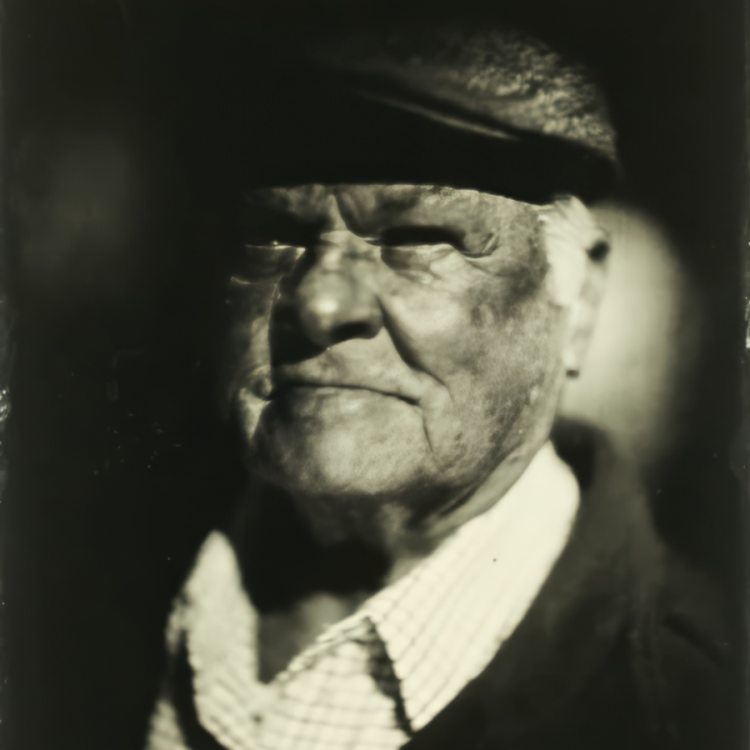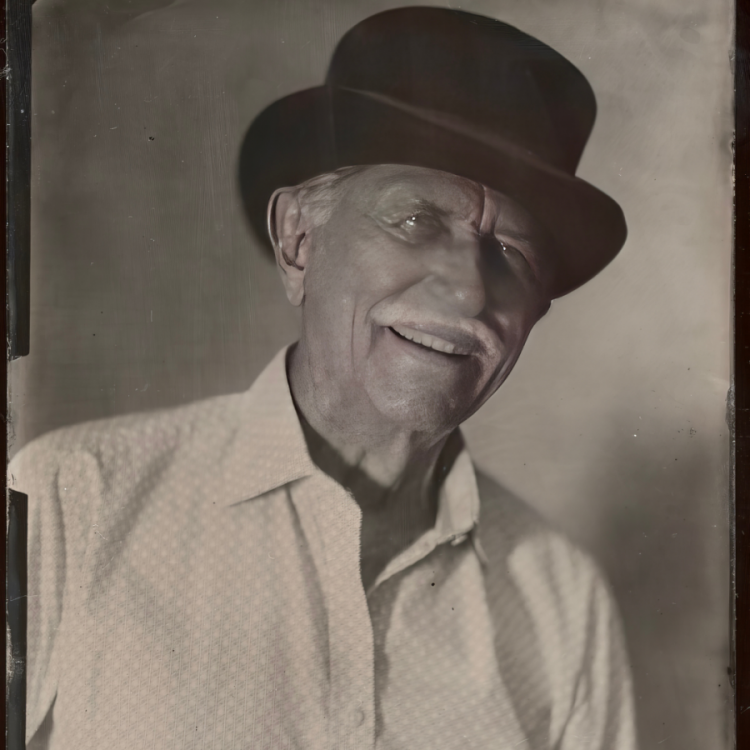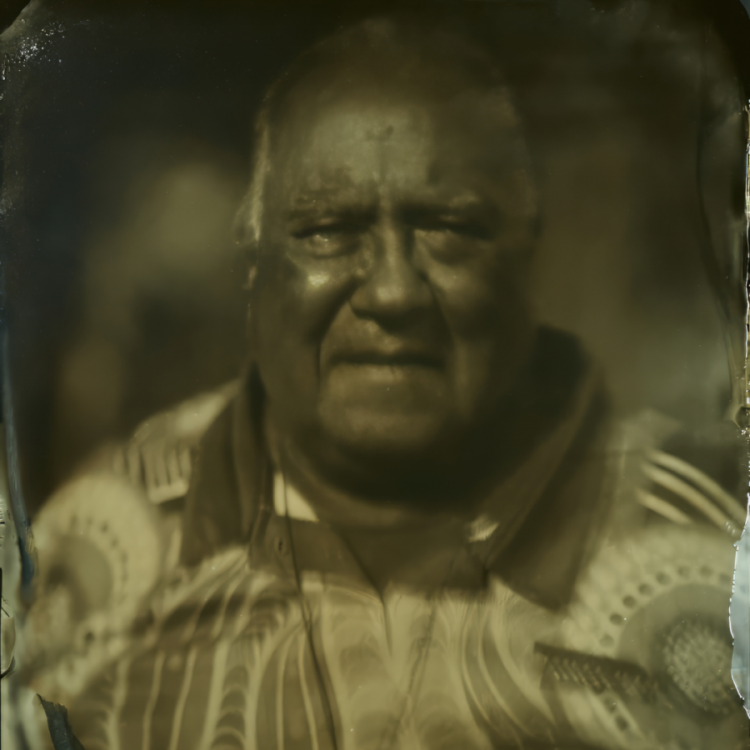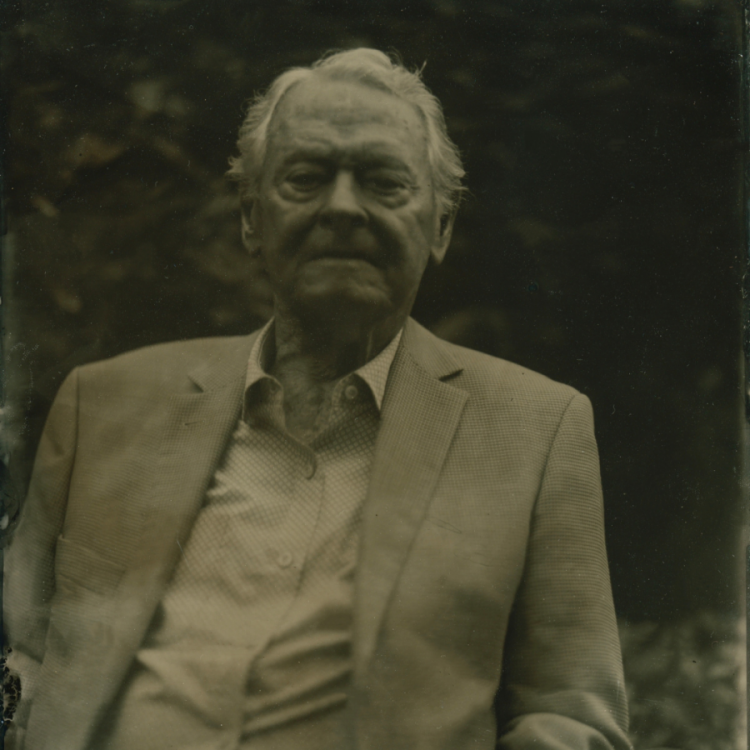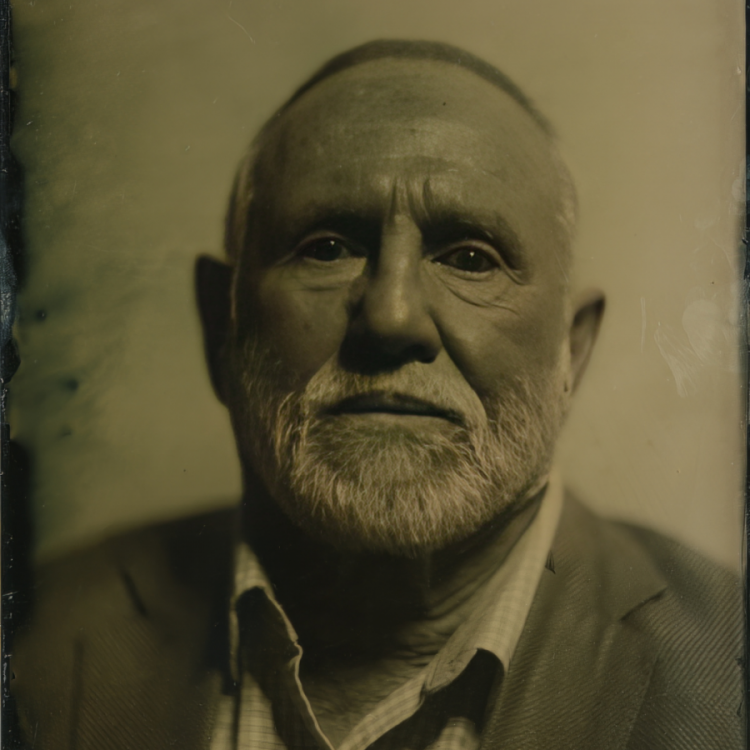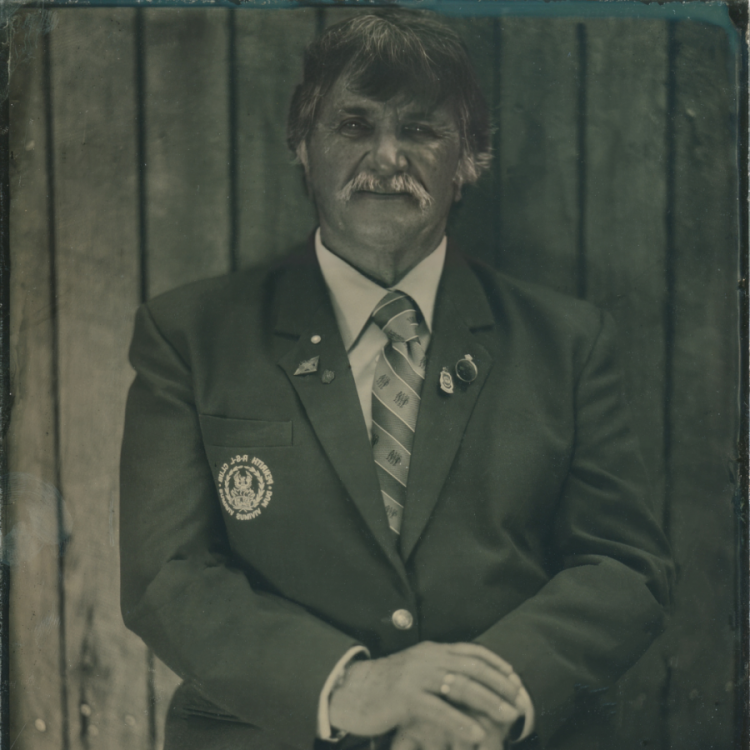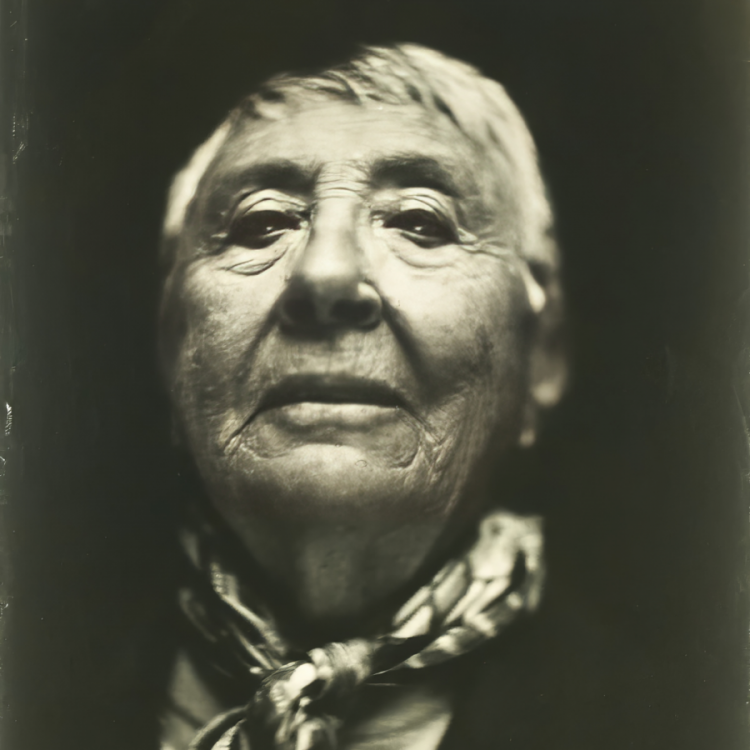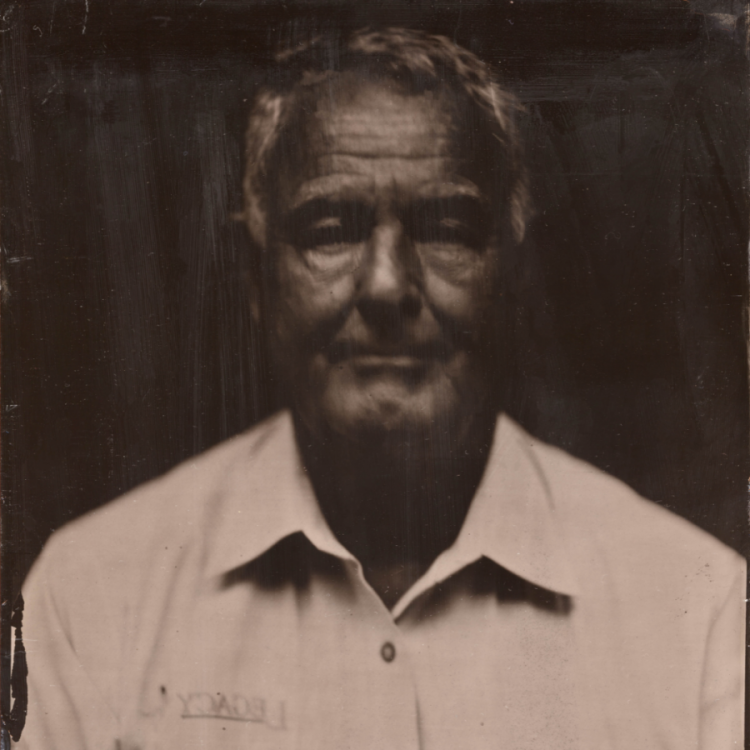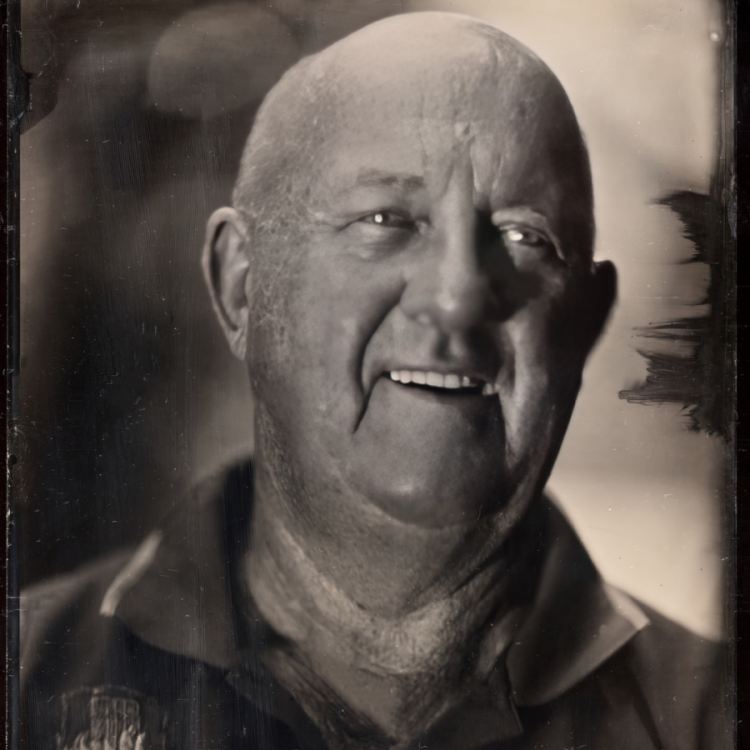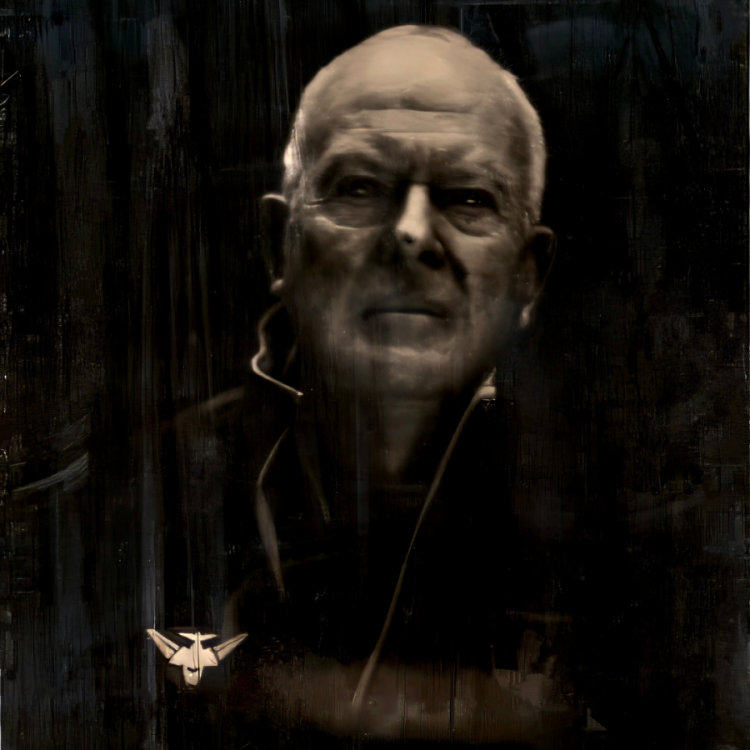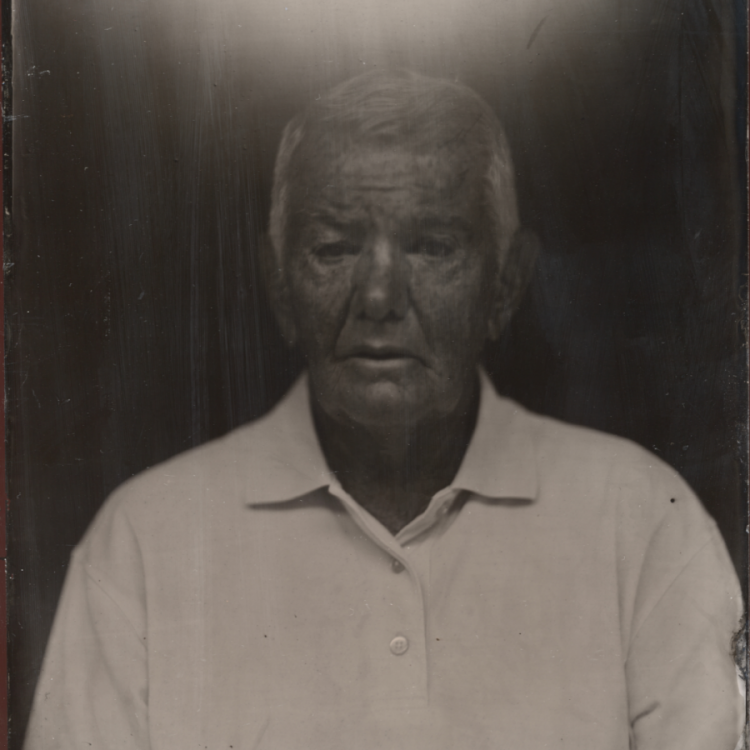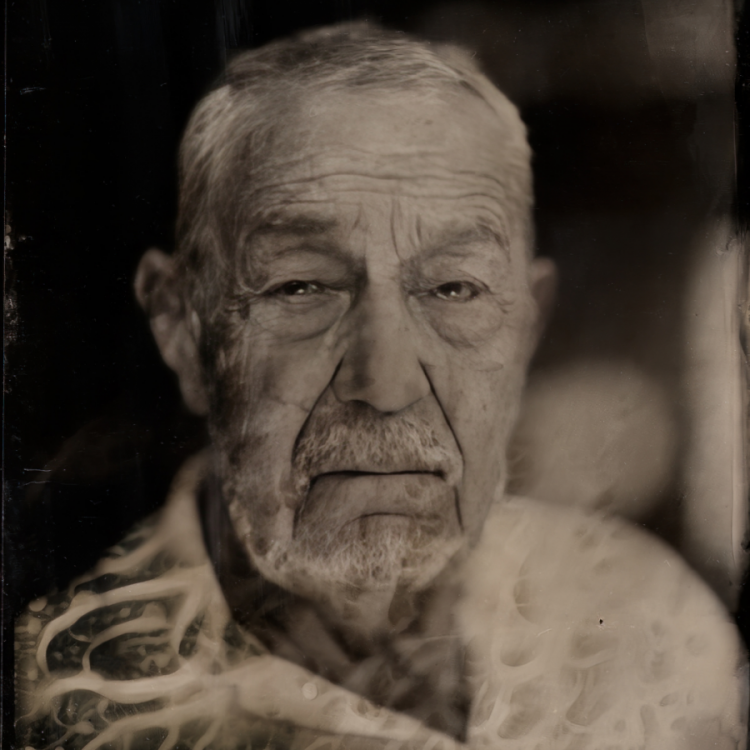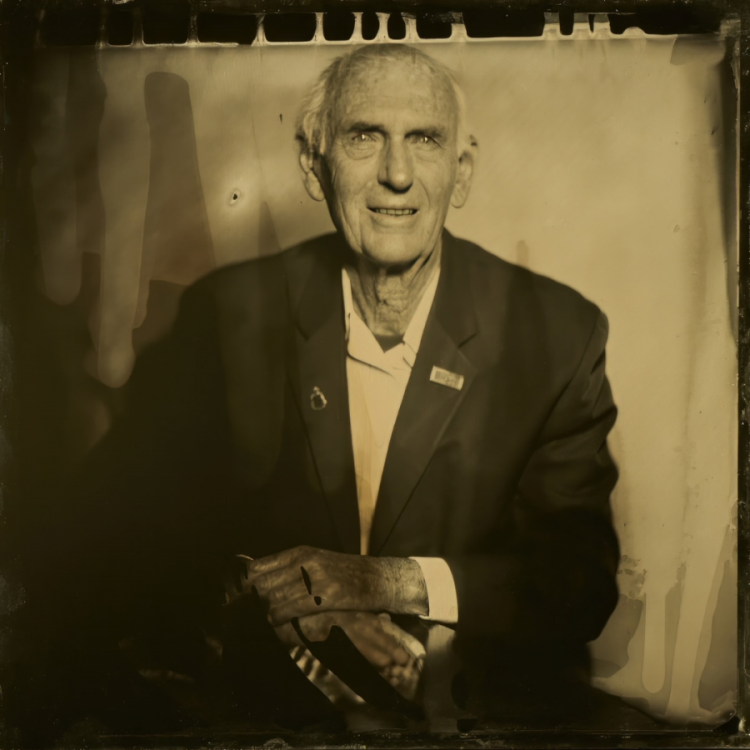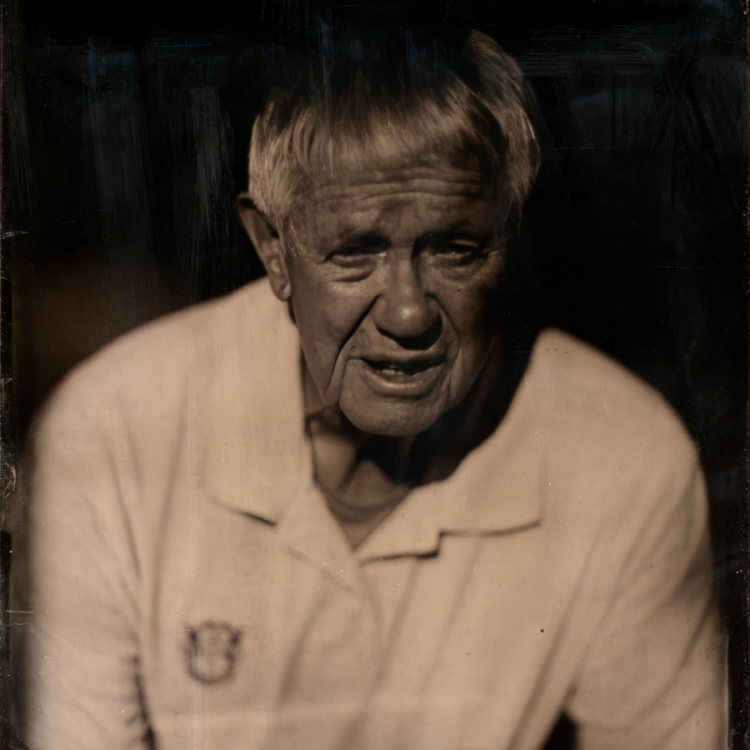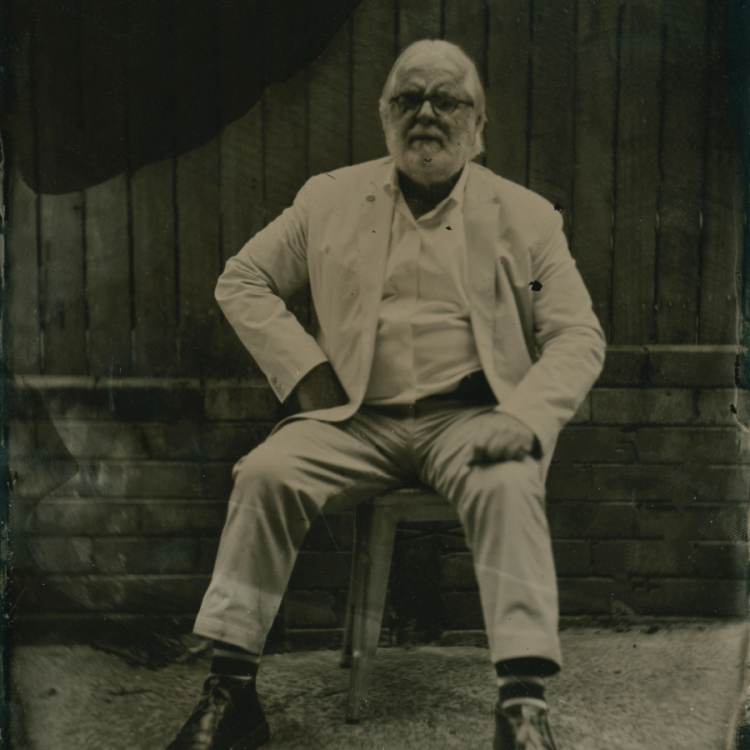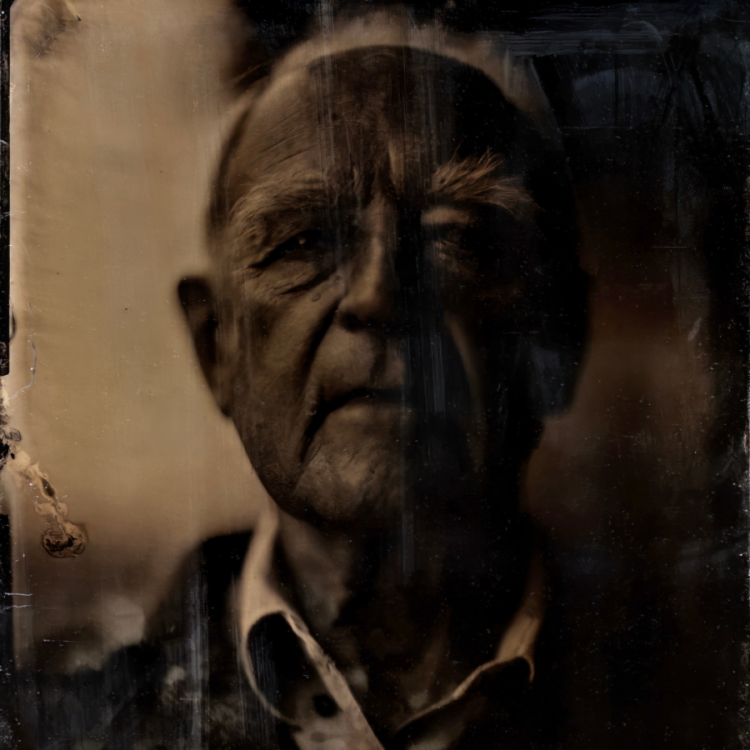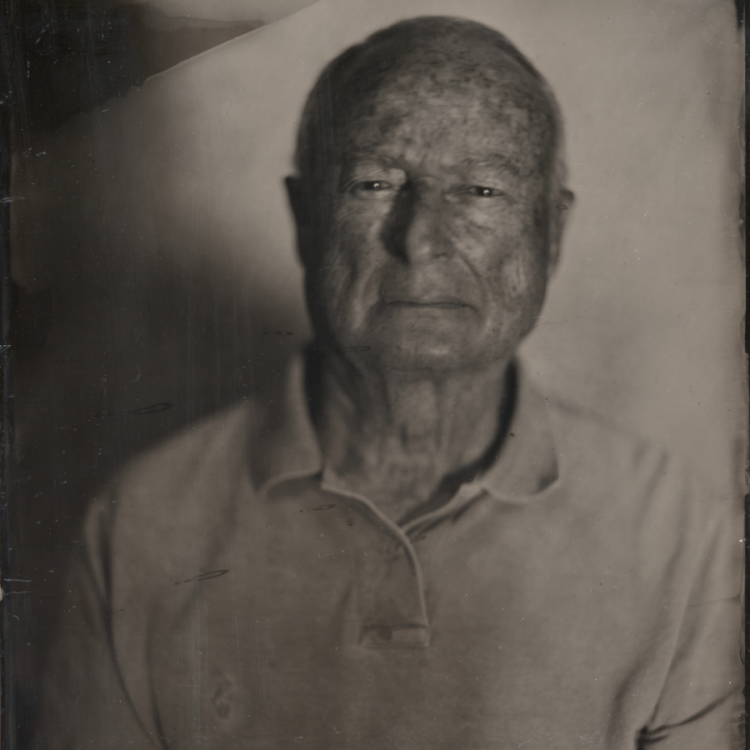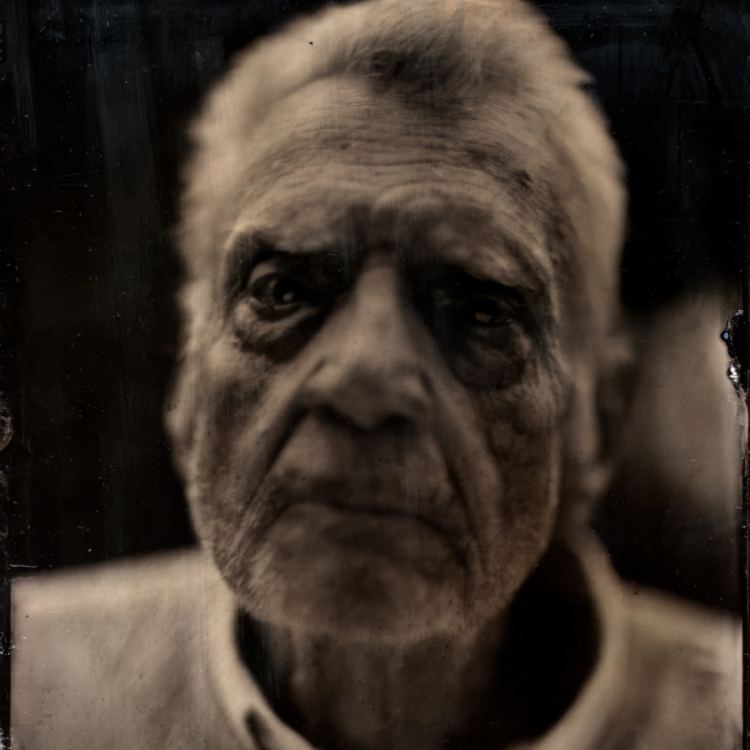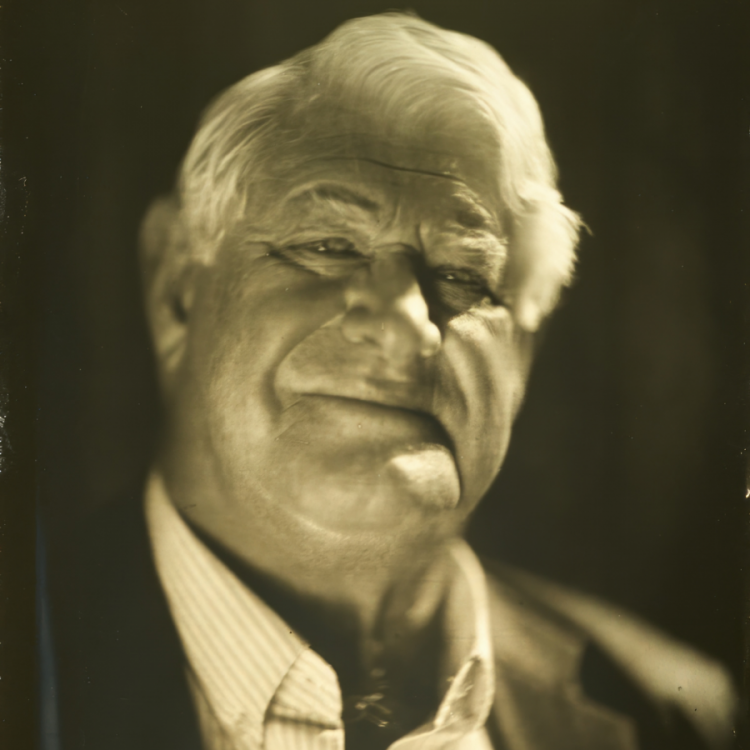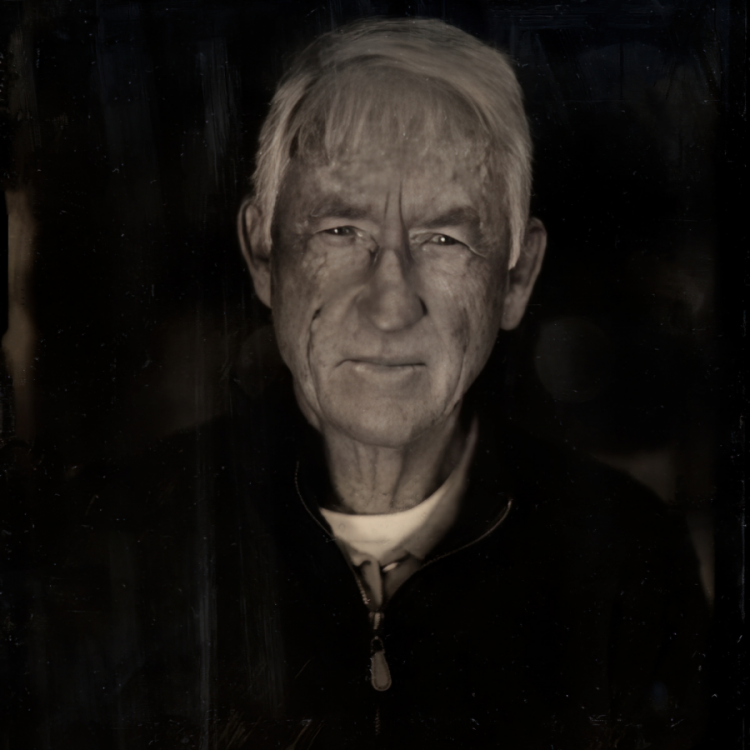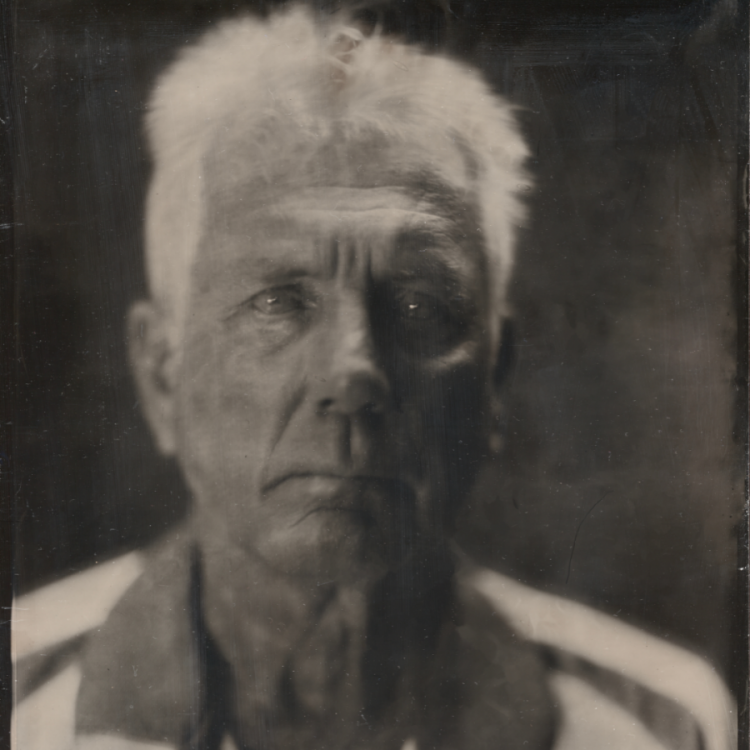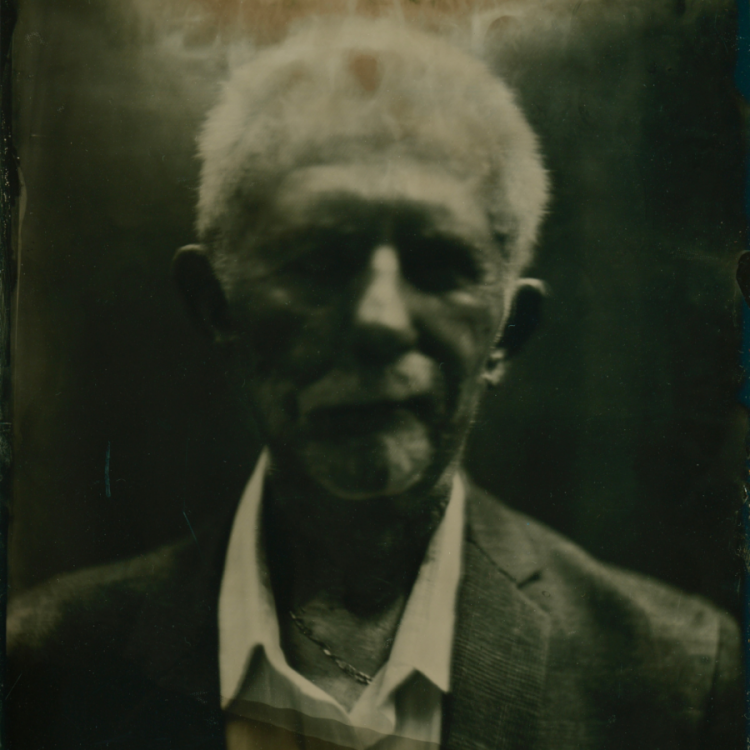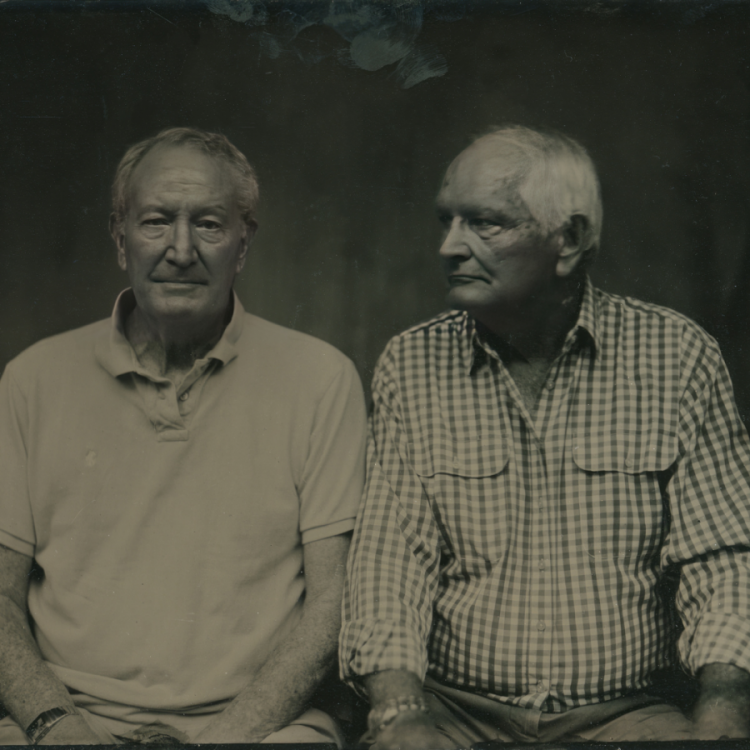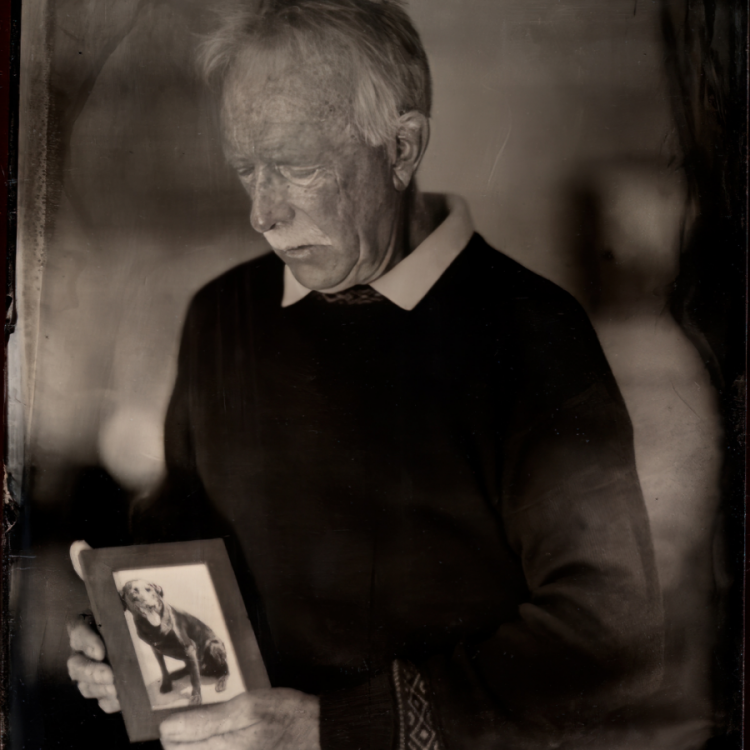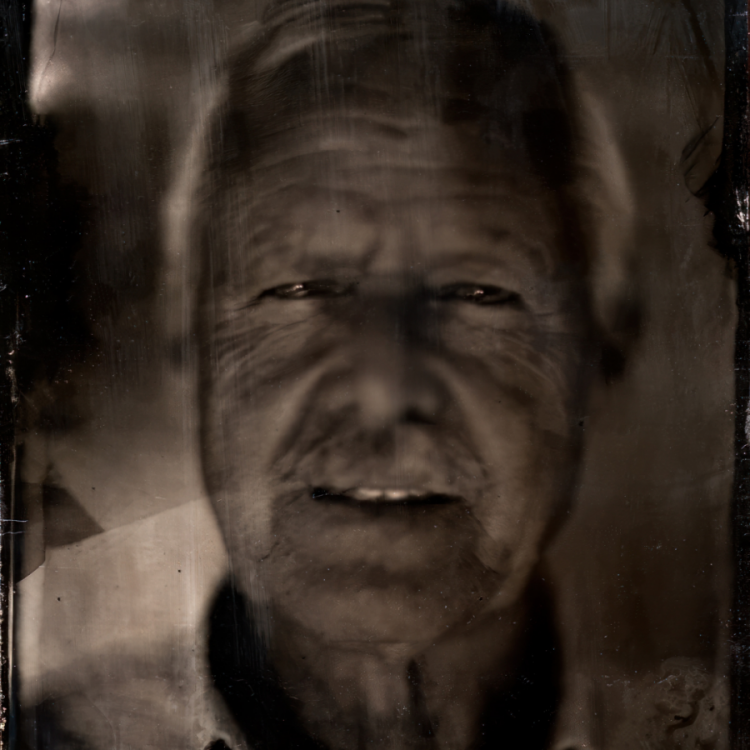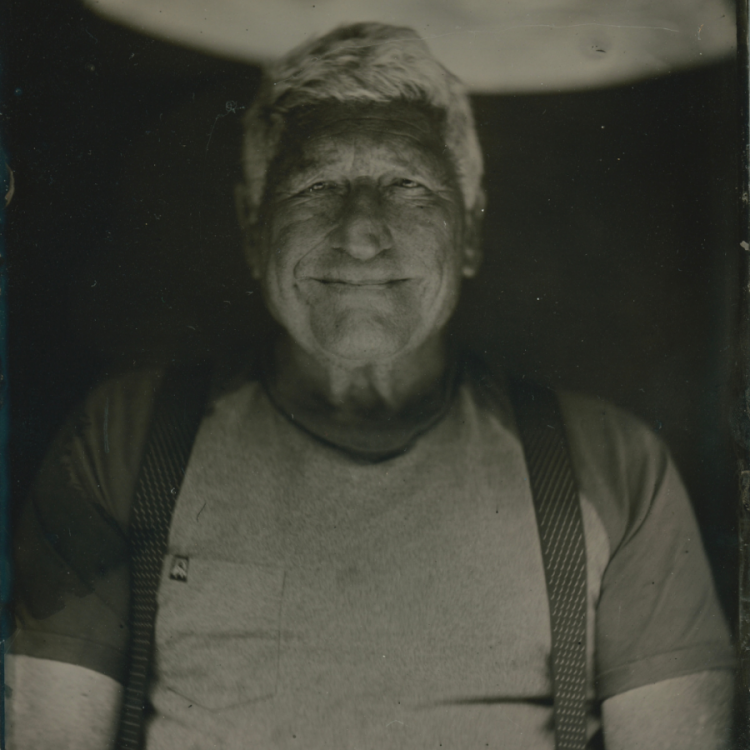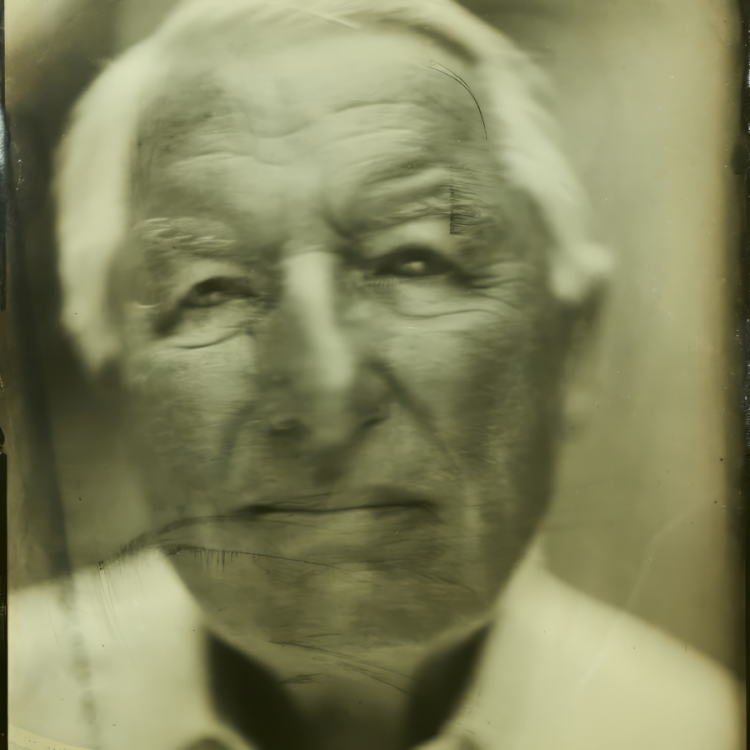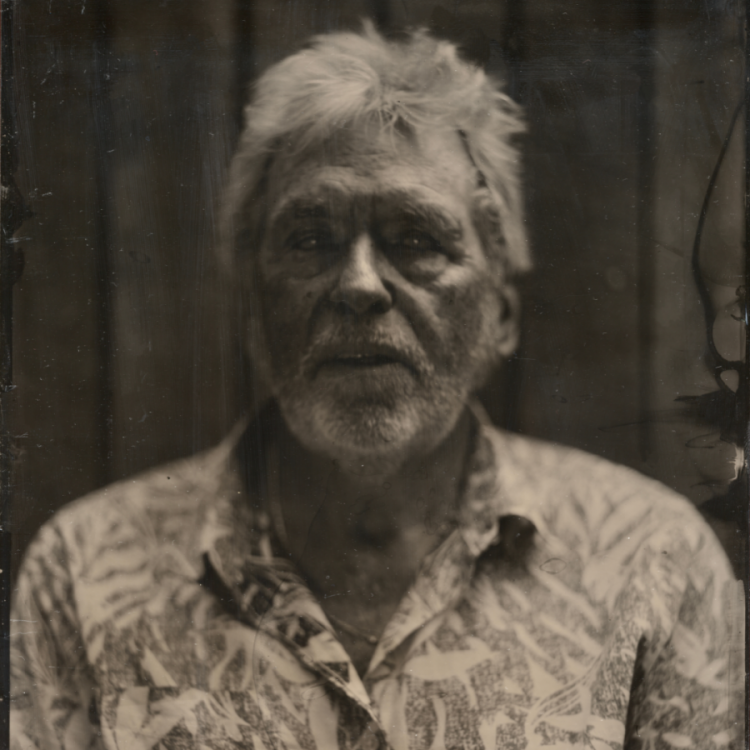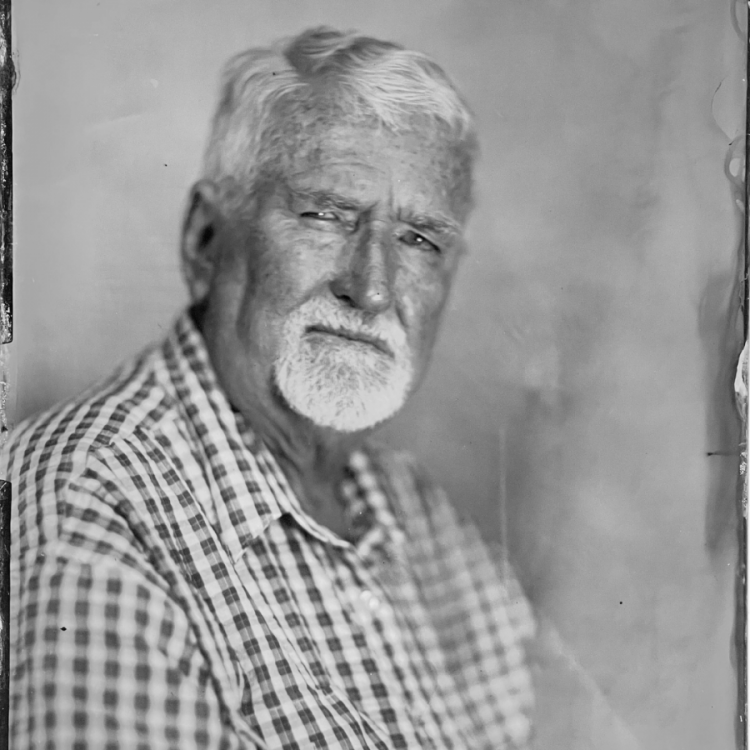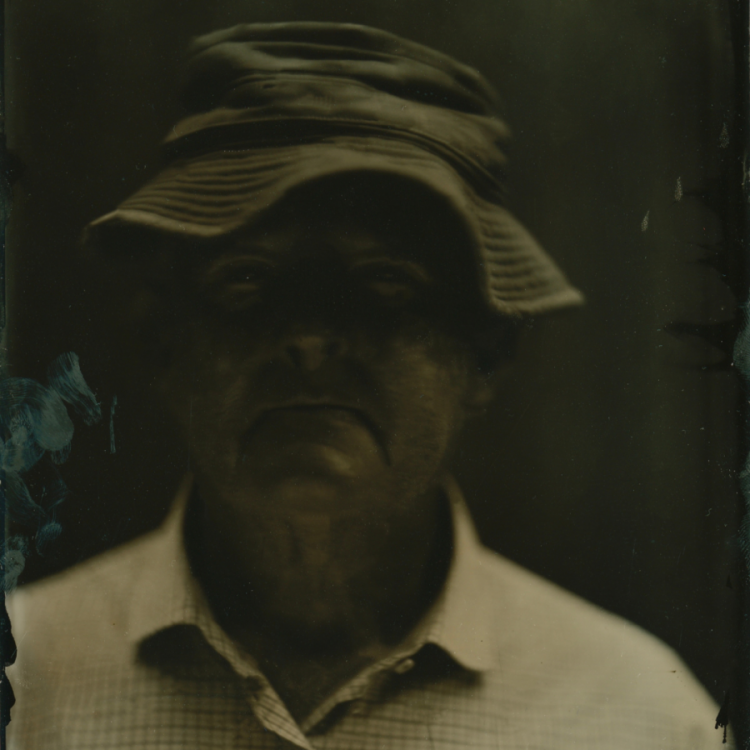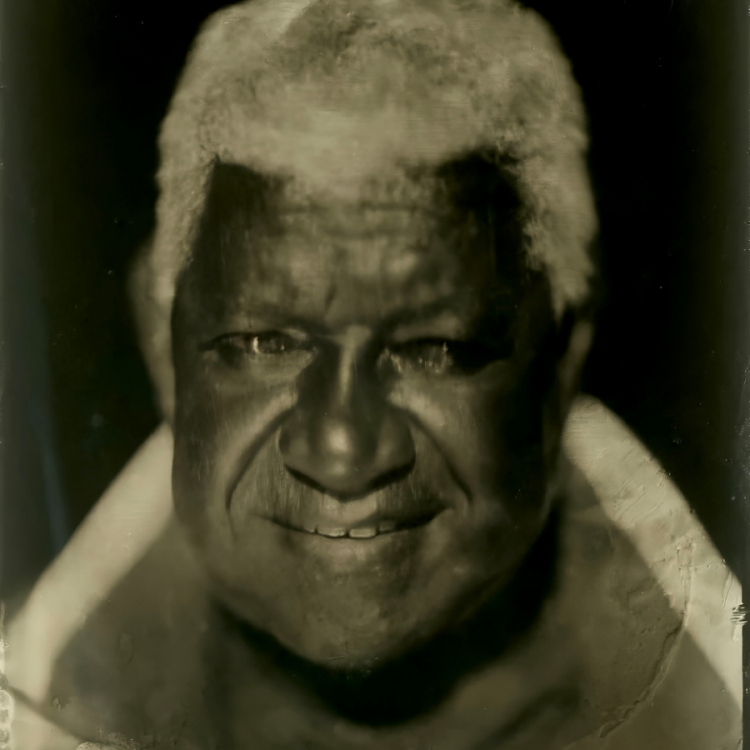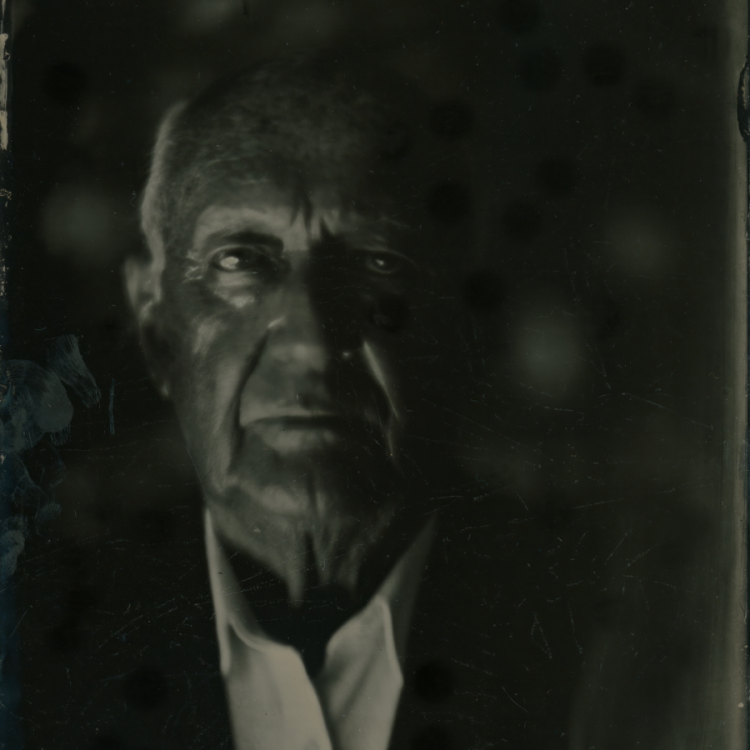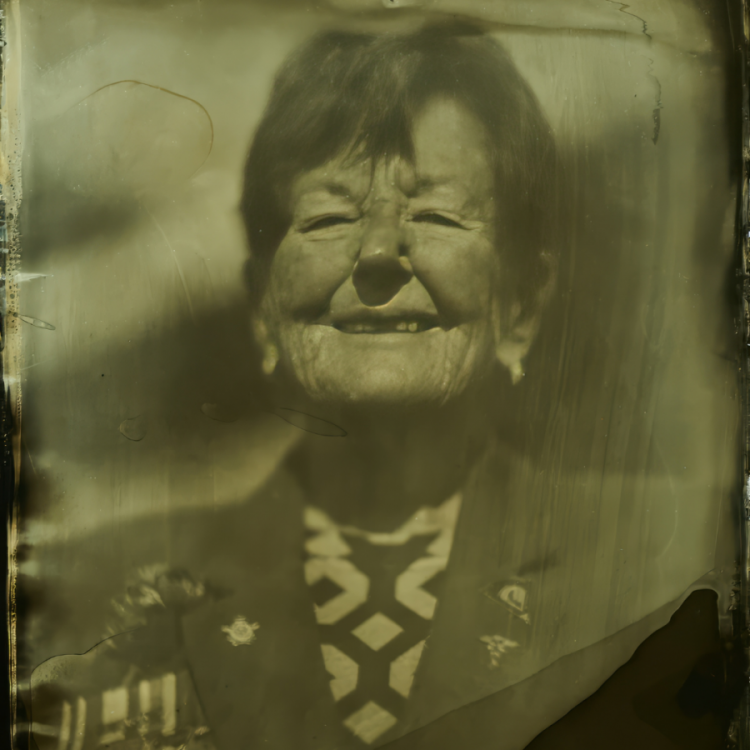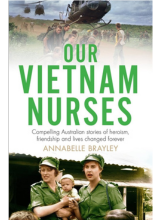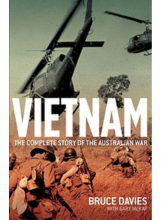Stories of the Dat Do Dogs is a photographic exhibition commemorating the 50th anniversary of the final withdrawal of Australian troops from Saigon. The exhibition features the photographs and stories of 50 veterans and nurses who served in Vietnam.
From Bourke to the Blue Mountains, veterans from across New South Wales volunteered to be featured in this exhibition. There are photographs and stories of those who served in the Australian Army, the Royal Australian Navy and the Royal Australian Air Force, and as nurses on the front line in the Royal Australian Army Nursing Corps and the Royal Australian Air Force Nursing Service.
The exhibition has been delivered in collaboration with artist Jack McLain, an American special forces veteran of the Afghanistan conflict.
Read the personal stories of service for each veteran via the menu below.
Flight Lieutenant Ronald William Aitken
Nos. 38, 36, 34, 2 and 37 Squadrons, Royal Australian Air Force
Service number: O219684
Rank on discharge: squadron leader
"Dave Godfrey and I were flying ten minutes behind John Downing and Al Pinches on a 'Combat Sky Spot' - a radar-guided bombing – when John and Al were shot down by an SA-2 missile. We were asked over the radio if we had contact with them. I responded 'Negative.' I responded 'Negative' to a few more queries.
Loss of contact was pretty unusual.
But when flying these CSS runs, you have to fly steady for a long way. We were sitting ducks for the surface-to-air missiles.
I think we were saved because they couldn’t get another missile."
Private Victor Edward Bartley
7th Battalion, The Royal Australian Regiment, Australian Army
Service number: 218834
Rank on discharge: temporary corporal
"In ’66, I was 19, and I got my national service papers, and they asked me, ‘Are you of Aboriginal/Torres Strait Islander descent?’
I ticked the box ‘Aboriginal’ and six, seven weeks later, I got a letter back from the Department of the Army exempting me from being conscripted.
In ’67, the referendum happened, and I got to be a citizen in my own country.
Three of me mates got called up, two blackfellas and a whitefella. And I thought, they’re not going without me.
Because they were conscripts they did two years, but that smooth recruiter, he signed me up for six years."
Gunner Robert Allen Billiards
Detachment, 131 Divisional Locating Battery, Australian Army
Service number: 2785702
Rank on discharge: gunner
"The third week of my posting was the first time I was shot at.
I said to the bombardier in charge of us 'I have butterflies in my tummy.' He said, 'You will get used to it.' Not sure I did.
I was attached to an American unit, and at my first breakfast mess, I saw all the tables had red-and-white checked tablecloths and chocolate and strawberry milk. Once I got to the head of the queue, I was asked, 'How would you like your eggs?'
And I said, 'Pardon?' He said, 'You know, scrambled, sunny side up, or over easy?' I said, 'Oh, I don’t like sunny side up, so over easy.' We were spoilt as the bloke who ran the mess was a US Italian draftee who owned a restaurant in New York."
Corporal Kevin John Bineham
AFV Detachment, 1st Division Intelligence Unit, Australian Army
Service number: 1200529
Rank on discharge: staff sergeant
"More than anything else, I remember the smell of bread. In the mornings, walking in the village, the smell of bread wafted everywhere. There were metre-high stacks of freshly baked French baguettes.
That smell of bread will always take me back to the village."
Private Harry Douglas Brandy
2nd Composite Ordnance Depot; 2nd Advanced Ordnance Depot, Australian Army
Service number: 2412270
Rank on discharge: private
"We’d be on guard duty, you know, once or twice a week, depending on what group you’re in. Through the night, then, you’d be thinking of what’s happening back at home.
I met this young boy – he was an orphan – in Vung Tau. And, you know, I felt sorry for him, you know. I sort of adopted him, you know. He didn’t have anyone to look after him.
It might have helped him, but it really helped me."
Colonel Raymond Lewis Burnard
Official duty (from Army Headquarters, Canberra); Australian Army Training Team Vietnam; Office of the Australian Military and Naval Attaché Saigon, Australian Army
Service number: 235022
Rank on discharge: brigadier
Honours/awards: AM
"I served as the defence attaché and it was such a paradoxical place. Lovely people, a great country.
They were all in this war that was going on they couldn’t control. One time, I was at a reception talking to my North Vietnamese counterpart and telling him I was planning on going to Vung Tau for the weekend. He quietly suggested this was not a good weekend to visit Vung Tau. That things there were unsettled.
That weekend, there was a series of guerrilla attacks on the road between Saigon and Vung Tau.
That’s just how the place was."
Leading Aircraftman John Arthur Chandler
No. 35 Squadron, Royal Australian Air Force
Service number: A222178
Rank on discharge: leading aircraftman
Honours/awards: JP
"Vietnam, to me, in the air force, was slightly different. You were always aware you were in a war zone, but we went downtown. We mixed with the locals, drank at the pub, went to the clubs, all of this with your friends.
Friendship means looking after one another. And that’s what we did.
When I got back, a lot of the little things I learned came back with me. Watching exactly where I was walking, always watching the people around me, eyes in the back of your head, that kind of thing. Outside of your friends you were serving with, you didn’t trust a lot of people over there."
Able Seaman Weapons Mechanic Barry David Costa
HMAS Duchess and Perth, Royal Australian Navy
Service number: R66636
Rank on discharge: able seaman weapons mechanic
"I remember one night, there was a minesweeper, an American minesweeper, ran aground and they’d asked to help. So our captain decided to go and have a look. We went in, but then it got too shallow. The skipper, he decided to turn around and leave. And, as we were leaving, that minesweeper got bloody fired on from shore.
It was a trap, you know, so we hightailed it out and she got the bloody living hell blown outta her. I’d stick my head out of the gun turret between watches to see the bloody rockets and tracers. I saw that and thought, 'This is for real.'"
Private Paul Vincent Crofts
2nd Battalion, The Royal Australian Regiment, Australian Army
Service number: 2792844
Rank on discharge: private
Honours/awards: OAM
"They used to call us 'Pongos'. We stank. We honestly stank.
We were out in the scrub, and we were out there for weeks and no bath, no shower, no nothing. I think I had one shower at a fire support base. They stripped us all. We had to all strip down and go for a shower. That was the one time in that year that happened to me.
And when we got back to the base at Nui Dat, we used to go to the showers, and get the soap and scrub up, and put our new greens on again. You know, but the greens used to stink 'cos you’ve got the perspiration, the sweating, all the time. But’s that’s why they used to call us: 'Pongos'."
(Temporary) Corporal Glenn Daly
Detachment, 11 Movement Control Group, Australian Army
Service number: 2781548
Rank on discharge: warrant officer class 1
"When I arrived, we didn’t have buildings or anything like that at Vung Tau. We were still living in tents and with monkeys running around behind us in the sandhills with some scrub there. We didn’t need to worry about it. We really didn’t have anything set up for us. We were living on ration packs to start with. There was no water for a shower. So when you got the opportunity to go down to the beach, which is only a short distance, you’d go down there to try and get clean, but there was plenty of sea lice.
I watched the hospital grow, too. It was one of the first prefab buildings. Our first priority was making a floor for our tent. It was made from shipping boxes, and it was a real jigsaw of woodwork. For tools, we’d scrounged a ball-peen hammer, a claw hammer with a broken handle, as well as a rusty blunt saw. One of the other tasks was building a floor for the colonel’s tent. It was made from the prefab building crates. We did all that building with just those.
You get inventive when you’ve got nothing."
Lieutenant Mary Ruth Devine (née Page)
1st Australian Field Hospital, Australian Army
Service number: F25228
Rank on discharge: major
"I’d finished my nurse training, and all my pals were heading overseas. Off to England to work and travel to Europe, and that sort of stuff, which really didn’t appeal to me. And I had spent all my money on a car anyway.
So, I thought, so what am I gonna do? I happened to see this article in the Women’s Weekly, about the first four army nurses who had gone to Vietnam before even the proper hospital had been completed. I thought, 'I could maybe do that.'
I remember the buzz of the hospital activity. Our mess looked out over the unit, and there were choppers and aircraft regularly flying around the base.
Work was tough at times, but you know, nurses, they cope."
Leading Aircraftman Eric Clarence Easterbrook
No. 9 Squadron, Royal Australian Air Force
Service number: A224026
Rank on discharge: squadron leader
Honours/awards: OAM
"It was Christmas Day, 1970. We were up at Nui Dat and a bunch of us got together. Must have been 12 or 14 of us, all different ranks and trades. We got together and everyone pooled all of our parcels from home and had Christmas lunch together.
There was a bit of everything on the table; something for everyone and something contributed by everyone.
That’s a memory I always treasure."
(Temporary) Corporal Stephen Marsden Emerson
Detachment, 11 Movement Control Group, Australian Army
Service number: 2791956
Rank on discharge: corporal
Honours/awards: OAM JP
"Luscombe Airfield was up at Nui Dat and the RAAF that flew out of there were known as ‘Wallaby Airlines’: Caribous, helicopters, C-130s, all the lift aircraft.
One time, this C-130 Hercules lands and offloads all reinforcements, and he parks down on the apron with his tail pointed toward our huts. The pilot shuts down and goes to get something eat at the mess.
The tarmac was boiling hot and the C-130 sank down into that mess. The pilot came back, saw the bogged tires and fired up all four engines, ignoring us. He rev’d to full throttle and the prop wash became a storm of fly gravel, rocks and dust.
It peppered our hut full of holes the size of golf balls and leaving us with stinging wounds and seething anger towards cowboy Yankee pilots."
Private Bernard William Fitzpatrick
9th Battalion, The Royal Australian Regiment, Australian Army
Service number: 2788689
Rank on discharge: private
"I carried 'The Gun'. The M-60, a belt-fed machinegun, and 600 rounds, which is more than average. ’Cause we ran out a couple of times. It’s not fun, running out of ammunition.
Now, the M-60 comes with a spare barrel, because if you’re in a long fight the barrel gets red hot and you’ve gotta switch it. We’re hitting bunkers and you gotta put a lot of rounds down.
My number 2 gunner said, 'We’ve never used that bloody spare barrel. How about we dump it and carry a couple extra hundred rounds?'
I said, 'Yeah, no problem.'
The next contact, the barrel snapped.
I asked for a new barrel, and they sent an entirely new gun. Not a new one, but a secondhand one. Anyway, [on] our next contact, I went to lay down rounds and it fired one round. When they put this thing back together, they put the firing piston in front to back.
It was a single-shot machine-gun."
Bombardier Andrew James Forsdike
12th Field Regiment, Australian Army
Service number: 216951
Rank on discharge: bombardier
Honours/awards: OAM CBC
"I was talking to a couple of the Americans who were out there after we landed, and they were all in holes with helmets on and flak jackets, and I’m looking at them I said, 'What are you doing?' They said, 'What are you doing here?' He said, 'Don’t go looking for Charlie tonight; he’ll come looking for you.'
And he was dead right. He did."
Lance Corporal Ian Heyward Granland
104 Signal Squadron, Australian Army
Service number: 2792456
Rank on discharge: lance corporal
Honours/awards: OAM
"Our unit was in a rubber plantation. And for the first two weeks as I’d go on parade in the morning and get my name ticked off, get my rifle inspected, and then off to do your work. After about two weeks, the sergeant in charge of our little group said, 'Signalman Granland, come and see me.'
I went over, he said, 'You are now the sergeant’s mess barman.' And I kind of just shook my head, said, 'Oh, righto.'
Twelve months before, I’m a policeman walking around arresting people, and now I’m in a combat zone as a sergeant’s mess barman."
Lance Bombardier Geoffrey Leonard Grimish
12th Field Regiment, Australian Army
Service number: 215996
Rank on discharge: sergeant
Honours/awards: OAM
"When the battle of Coral kicked off, the first rocket hit my gun and knocked it out. A mate of mine lost his eye, and I got him to the command post and made my way back to my gun, but it was out of action.
Number Five gun got overrun, and they pulled their firing pins so the guns couldn’t be used against us if they got captured.
What was awful was waiting for the counter-attack to come; the tension of waiting, of knowing it would come, but not knowing when. It was awful."
Major Ian Moray Henderson
Detachment, 30 Terminal Squadron; Headquarters, 1st Australian Task Force, Australian Army
Service number: 14101
Rank on discharge: lieutenant colonel
"In 50 years, you forget about a lot of things that happen, but, as a commander especially, you don’t forget about losing seven of your soldiers.
Seeing that. Writing the letters to their families.
That night, I was moving around the compound and I heard a voice out of the dark, and I look around and there’s just the glow of a cigarette, bobbing up and down. I go over and it’s the Task Force Commander, and he said, 'Pull up a rubbish tin; sit down. I’ve been meaning to speak to you. Your stewards have broken two gross of plates in the last seven weeks.'
It took me probably five years to understand what he was really saying; he was saying, 'Shit happens, son. Get on with your job.' Pretty good command advice."
Corporal Robert Michael Hunter
Australian Force Vietnam Provost Unit, Australian Army
Service number: 2789489
Rank on discharge: corporal
"We’d do patrols, from about seven in the morning to about five or six at night, of the villages around our camps and bases.
When it got dark, the area was locked up. It was under martial law.
We ran patrols. We investigated vehicle accidents Australians were involved in. But we had a lot of freedom over the areas we were responsible for, to investigate and patrol. We could go maybe 10–15 miles around Nui Dat, and 15–20 miles out from Vung Tau, so we could see a lot more of the countryside."
Engineering Mechanic Ronald Raymond James
HMAS Sydney and Torrens, Royal Australian Navy
Service number: R94660
Rank on discharge: chief petty officer MTP 3*
Honours/awards: OAM JP GAICD
"We worked around the clock to get the cargo and troops off the ship, then embark the troops returning home to Australia. We were soaked in sweat in the sun and heat. The sounds of music from time to time blasting over the ship’s sound system was a real boost.
The music of the 1960s was the best. 'We Gotta Get Out of This Place' by The Animals and 'Proud Mary' by Creedence Clearwater Revival, those got you through."
Provisional Petty Officer Air Mechanic Weapons Peter Thurston Jones
RAN Helicopter Flight Vietnam, Royal Australian Navy
Service number: R54863
Rank on discharge: petty officer
"I was working on an airfield with the Americans, flying missions as an armourer and door gunner. Just outside our part of the airfield, there was a huge field where they would stage all these resupply pallets to go up country. It was all wrapped up in cargo nets, with the ammunition and explosives on top.
One windy night, one of the perimeter guards thought he saw something and sent up a parachute flare. The flare drifted with the wind and landed right on top of one of these pallets.
It was the best fireworks show you’ve ever seen.
But you had to watch it from behind the sandbags."
Flight Lieutenant Richard Keith Jones
RAAF Transport Flight Vietnam; No. 35 Squadron, Royal Australian Air Force
Service number: O221179
Rank on discharge: flight lieutenant
"We lived in an old French building called Villa Anna in Vung Tau township, a few kilometres from the airfield. It was a two-story building with marble floors and in quite good condition.
There were a large number of bats living in the ceiling that each evening would come down through an open manhole, fly along the hallway and out a window to feed up on the hill behind. They would come out in three waves which we call A Flight, B Flight and Training Flight. The first two were well organised but the last one was somewhat straggly.
We cooked for ourselves after long hours on duty but employed local Vietnamese civilians to do the cleaning and washing. I made very good friends with a number of the local Vietnamese people. I felt really bad leaving at the end of my tour, because I was going back to a good life in Australia, but they had put up with the continuing war surrounding them.
In the end, we just left them."
Warrant Officer Class 2 Jack William Lake
Australian Army Training Team Vietnam; 5th Battalion, The Royal Australian Regiment, Australian Army
Service number: 213825
Rank on discharge: warrant officer class 2
"Most soldiers of the Aust Task Force in Nui Dat only had contact with the Vietnamese people either as the VC, the enemy, on operations, or down in Vung Tau whilst on 'in country' R&C.
Some people would get the wrong impression of the Vietnamese in general. So, prior to leaving for R&C I would remind my Company these people live here all the time.
'You do your six to twelve months and you go home. But for them, this IS home. They’re just trying to get by. They’re trying to live from one day to the other.'
Vietnam back then was a very poor country. I saw people living in concrete culvert pipes, anywhere they could, any way they could. I’m still connected with the Vietnamese community here. They’re great people.
Private Ian Anthony Loaney
8th Battalion, The Royal Australian Regiment, Australian Army
Service number: 2792038
Rank on discharge: private
"Vietnam … I have no regrets about serving in Vietnam, just … hard lessons learned."
Lieutenant William Stafford Lowe
RAN Helicopter Flight Vietnam, Royal Australian Navy
Service number: O707
Rank on discharge: lieutenant commander
Honours/awards: MBE
"I was part of a detachment of [Royal] Australian Navy aviators, mechanics and support crew in the 135th Assault Helicopter Company on the American base Blackhorse. I was the maintenance platoon commander. My biggest memory is that, in the year I lived and flew there, the food never got better.
I bought myself an electric frying pan, and if I was flying past Nui Dat or the RAAF in Vung Tau, I’d sometimes stop in there and scrounge something from the army or air force messes. Get myself some steaks, a leg of lamb, whatever they had on hand. I’d take it back to Blackhorse and prepare a meal. I’d usually share it with a couple of my senior staff.
I was very busy working night and day. Maintenance and flying.
I logged 700 flight hours in one year."
Trooper George Thomas Main
A and B Squadrons, 1st Armoured Regiment, Australian Army
Service number: 1202186
Rank on discharge: major
"Somehow, we ended up with a pet monkey. The monkey used to hang around the bar at night, and at some point it learned how to open our beers for us.
One day, we decided that the perfect match to the monkey was a goat. So we traded some rations to some villagers for a kid goat.
The monkey and the goat got to be fast friends. The monkey rode all over camp on the back of the goat and the two of them used to get into all kinds of mischief. We figured out that at night they would leave the wire. The monkey would move the razor wire around so they could get through the perimeter, then, the two of them would navigate through the mine field around base. So they’d go out into the jungle together and every morning they were back inside the wire.
No one ever saw them with cuts from the razor wire, and they made it through the mine field without ever blowing themselves up. No one knew how they did it."
Flying Officer William Stewart McAlister
No. 35 Squadron, Royal Australian Air Force
Service number: O17860
Rank on discharge: group captain
Honours/awards: MBE
I used to fly support missions for the American special forces units all along the Cambodian border in a Caribou. The special forces commander of one of these camps along the border was killed, and I was flying the new guy in, and I asked,
'What do you reckon your life expectancy is?' And he said, 'Oh, it’s six weeks.'
I didn’t realise it was as short as that. Six weeks later, I didn’t fly him out, but somebody else did. It was almost like a death sentence getting sent there. Dak Seang. It was a very hot place."
(Temporary) Corporal Michael Joseph McCoy
Official Duty (from Eastern Command Personnel Depot), Australian Army
Service number: 2792059
Rank on discharge: corporal
"I used to go over to Vietnam every five or six weeks. I would land, get a pistol in Saigon, and I’d spend a week moving from Saigon to Vung Tau to Nui Dat on my own. I would process the pay and leave forms for the guys going back to Australia, so they could go straight out the door when they got back. I’ve been told that I don’t qualify for benefits as a Vietnam veteran, since my entire unit didn’t go; that, technically, I’m only a 'visitor'.
That was a helluva visit."
(Temporary) Corporal Christopher Harry McKay
8th Battalion, The Royal Australian Regiment, Australian Army
Service number: 218293
Rank on discharge: private
"I had a lot of overseas postings, but after Vietnam, I was pretty much over the army type of lifestyle. We did a lot of patrols – ambushes, mostly – up in the Long Hai hills. One of our worst days was 28 February 1970. Eight members of Alpha Company, 8RAR, were killed by mines in the space of about three hours.
It was a hard, hard day at the office.
I remember once, we captured this Viet Cong in a bunker system; this kid was maybe 14 years old. We brought him back to in an armoured personnel carrier and this poor kid, he’d wet himself. I’d never seen the look of fear on anyone’s face that I saw on his. Through the commander’s interpreter, I learned that he’d been raised in a communist family in the north, and that he’d been told that if he was captured the Australians used to eat their prisoners of war. He believed that’s what was going to happen to him."
Second Lieutenant Gary John McKay
4th Battalion, The Royal Australian Regiment, Australian Army
Service number: 2789609
Rank on discharge: lieutenant colonel
Honours/awards: MC OAM
"For me, Vietnam is 30kgs on my back, wet with sweat and walking in a single file. No one speaking. Using only hand field signals to communicate.
It's short, sharp, violent contacts.
But a couple of times, we had longer engagements. One, it took us four hours to go 200 metres.
That's not what it said in the training pamphlet..."
Lance Corporal Gregory Stephen Meek
110 Signal Squadron, Australian Army
Service number: 218517
Rank on discharge: lance corporal
"One of the guys was sent back on compassionate leave, and I was sent to Saigon for three weeks, to the communications centre there. Right across the street from our compound was a Buddhist temple. It was the one where the monks used to burn themselves to protest the war. And this one night, this monk was sitting in the middle of the courtyard, and he’d dowsed himself, and my mate says to me, 'Shit, there’s another one!' We were all looking out the window, and then Sarge came in and started yelling at us, 'Get down! Get down! Get down! Don’t look at it! Don’t look at it!' He just wanted to make sure we didn’t witness it; you know, curiosity makes you want to look, but this fellow kept us from seeing that.
I was 19, from Earlwood in Sydney, where old people walked past my grandmother’s house and nodded 'G’day, how you going?' and to just understand that this stuff was happening … it changed my life."
Private David Thomas Morris
4th Battalion, The Royal Australian Regiment, Australian Army
Service number: 2795994
Rank on discharge: private
Honours/awards: JP
"One night I’d done my sentry duty and I’d gone back to my little hootchie.
I was listening to Iron Butterfly’s In-A-Gadda-Da- Vida on my pocket transistor, when I heard this noise like something charging through the bush.
To me, a city kid, it sounded like half the North Vietnamese army was charging at me. So, I got my rifle and put it on fire … then this pig jumped on top of me. I yelled ‘Ah!’ and woke everyone up, and the pig started snorting and screaming and running around the track through the other gun pit. I wondered why the blokes on the next gun weren’t opening up with Claymores, but I found out the next day they were from the country, and they knew what pigs sounded like charging through the bush."
Acting Petty Officer Electrician Weapons Radio Kenneth Lindsay Norris
HMAS Perth, Sydney and Vendetta, Royal Australian Navy
Service number: R63680
Rank on discharge: lieutenant
"My first trip to Vung Tau, it was like Christmas, with the night sky lit up with flares and shell tracers accompanied by the pounding of the shore guns. Taking diggers back to Australia aboard HMAS Sydney in ’67-’68, I talked to them, and they were proud of their efforts in Vietnam.
My last deployment, aboard HMAS Perth, in six months we fired over 10,000 5-inch artillery rounds. I lived directly below the aft gun mount and every time the guns fired, specks of asbestos separated from the overhead pipes and and appeared like Christmas snowflakes throughout the messdeck."
Sapper Rodney Stephen O’Regan
1st Field Squadron, Australian Army
Service Number: 292697
Rank on discharge: sapper
Honours/awards: OAM VA
"I mainly cleared minefields. It was our job to clear the Australian-laid minefields surrounding some occupied hamlets and forts in the province. The dozer would go in and dig a trench, two blade-widths wide and 2 metres deep, across the minefield and the top layer of soil either side of the trench that contained the mines would be pushed into the trench and then covered up, burying any unexploded mines. Really dangerous stuff.
Antipersonnel mines would go off at any time. 'Boom Boom' was the name of our armoured personnel carrier. We would go in and retrieve any mines that hadn’t exploded.
Boom! Boom!
That was the sound the mines would make when being ripped up.
It reminded me of my youth in the field ripping up potatoes. But this time, explosive potatoes."
Second Lieutenant Paul Stacy O’Sullivan
6th Battalion, The Royal Australian Regiment, Australian Army
Service number: 19966
Rank on discharge: brigadier
Honours/awards: AM MBE
"The rubber, paddies and the jungle became familiar environments. In about October 1966, I went to Saigon with my platoon for a week to provide security at the hotel where the HQ AFV signallers lived.
I remember feeling really uncomfortable. It was too crowded, too much going on.
I felt exposed. I remember feeling relieved when we got back to Nui Dat, back to the jungle, and thinking, 'This is what I know. This is what I’ve been trained for.'"
Ordinary Seaman (Electrical Mechanic) Gary William Oakley
HMAS Sydney, Royal Australian Navy
Service number: R104155
Current rank: squadron leader
Honours/awards: OAM
"I was on HMAS Sydney and we’d go back and forth between Vung Tau and Australia with troops and equipment. When we were in Vietnam, we’d be on guard, watching for swimmers, and you had a rifle, but you weren’t allowed to keep the magazine in it; you had to keep the magazine in your pocket. And if you saw something, you weren’t supposed to open fire, you were supposed to call the bridge on the phone.
Vietnam was all smells, though: the smell of fear on the new guys getting ready to get on the Chinooks and fly up to Nui Dat and start their tours.
The smell of the jungle and that heavy smell of decaying vegetation. But, most of all, the smell of avgas (jet fuel). That smell was everywhere.
I remember the guys who we’d be taking home – they’d get off the helicopters – and the way they walked and talked and looked at each other. There was a love for each other, even if they didn’t like each other."
Private Robert Charles Pearson
9th Battalion, The Royal Australian Regiment, Australian Army
Service number: 2412516
Rank on discharge: private
"Our five-man tracking team and my tracker dog, Julian, were requested to patrol with Delta Company, who had discovered a bunker system in very thick jungle. Shortly after arriving, there was contact with two Viet Cong, resulting in one of them being wounded.
Julian was put onto the blood trail which he followed for approximately 150-200 metres. After this anxious track through the bunker systems, Julian collapsed under a tree from exhaustion. My cover man and I were with Julian, and the visual tracker came crawling up alongside us. We were lying on the edge of the track, looking for signs of where the enemy might have gone.
I then looked up the track, and maybe 7–8 metres away was a Claymore mine pointing at us.
We laid there, and my mind kept picturing that mine going off and killing all four of us. Thankfully, we were able to slowly crawl back out of there."
Signalman Gregory Edward Rogers
110 Signal Squadron, Australian Army
Service number: 218099
Rank on discharge: corporal
"For me, coming back to Australia was one of the worst experiences I’ve ever had. We flew back into Sydney at midnight on a 707, and I’m trying to get a taxi, but none … would take me out to Manly, it was too far out in those days. Here I am, in this city that is filled with this eerie silence, and I’d just come from all these sounds of war. It was really disturbing.
I finally got home to my mum, and she didn’t know I was coming because you weren’t allowed to advise your movements. I bought a a car and a motorbike and then went AWOL. I got in disciplinary trouble for desertion, [and was] sentenced to Holsworthy Military Correction Centre where the commandant enquired what my problem was. I said, 'I just don’t fit in here, anymore, really.' He says, 'What do you want to do, then?'
I said, 'I wanna go back to Vietnam where I was happy.'
I received a redeployment posting back to Vietnam two weeks later."
Pilot Officer Ian Kingsley Scott
Headquarters Richmond, Detachment S, Royal Australian Air Force
Service number: O46543
Rank on discharge: air commodore
Honours/awards: AM
"We had a mission to pick up these babies and fly them to Bangkok, where they were going to get on a Qantas aircraft and fly to Australia for adoption. We got to the tarmac, and some buses pulled up with nuns and children and other health support workers.
For some reason there was quite a lengthy delay and so we had to feed the kids. Normally, cockpit crews don’t help with passengers down the back, but everybody had to give a hand. It was really sad.
These little kids, with sores all over them, were going to be flown off to another part of the world, with no idea of what was going on.
That is my strongest memory. That’s the thing that keeps coming back to me. Those poor little kids."
(Temporary) Warrant Officer Class 2 Michael John Shave
Australian Army Training Team Vietnam; 9th Battalion, The Royal Australian Regiment, Australian Army
Service number: 1201583
Rank on discharge: warrant officer class 1
"There was this coolness that I’ll always remember. If I close my eyes, I can still feel it. At the end of a day of patrolling, you’d set up a patrol base, establish a perimeter. You’d been slogging through the jungle all day, covered in sweat.
Then, there was this moment, as the light faded from the jungle, there was a coolness that would rise from the jungle floor.
It was quiet as the jungle moved from day to night, and it was cool and quiet. And peaceful. Beautiful, really."
Flight Lieutenant Ronald Alexander Slater
No. 79 Squadron; Headquarters, Australian Force Vietnam (RAAF Element), Royal Australian Air Force
Service number: O61240
Rank on discharge: flight lieutenant
Honours/awards: DFC
"I remember flying into Tan Son Nhut airport and getting a flight out to join the Big Red One [US 1st Infantry Division]. We were flying over the jungle, and I remember seeing all these bomb craters; it was like we were flying over the moon. This lush, green canopy of jungle with these huge, round divots in it … everywhere.
And I remember thinking, 'If we can’t win with this kind of firepower, we cannot win this war.'
That was my first day in country."
Captain Roderick Wilson Stewart
1st Field Squadron, Australian Army
Service number: 235156
Rank on discharge: major
"I remember we were having lunch one day, and there was an American Green Beret major there. He was a pretty good soldier. And I said that to him once, and he said, 'I damn well oughta be. Outta my original draft of a hundred that came here, 98 have gone home in aluminium boxes.'
This young American captain who’d just arrived, he said to this major, 'I’ve been here all of three weeks, and I haven’t seen a Viet Cong yet.'
With that, the major downed his tools, grabbed him by the scruff of the neck and dragged him out onto the busy street outside. He said, 'There you are, thousands of ’em.'"
Private Craig Dufaur Terrey
Headquarters, 5 Company, Royal Australian Army Service Corps, Australian Army
Service number: 2786037
"I worked in the Q Store, doing the paperwork, but I’d go out on convoys because it got so boring in base. Once there was an ambush set for us, but just as we got there, there was an infantry patrol coming up the gully, and they saw it.
Our guys were on one side of the road, Charlie was on the other side of the road, and we were in the middle.
I was in a 5-tonne truck with 9 tonnes of howitzer ammo in the back.
But the driver was a damn good driver. He put the pedal to the metal real quick and got us out of there. That was the worst thing I was ever in over there."
Corporal John Edwin Verhelst
Headquarters, 1st Australian Task Force, Australian Army
Service number: 3797649
Rank on discharge: corporal
Honours/awards: JP
"I spent many days in Huey gunships. I would fly with them on SAS jungle inserts providing security, and with the medical team or public relations team.
One day I returned to Kanga Chopper Pad at Nui Dat and the air force person filling the fuel tanks looked at me in horror and he showed me where a row of bullets had blasted the side of the chopper, about 18 inches from where I had been sitting for the last two hours.
I shrugged and walked off."
Corporal Michael James Walker
4th Battalion, The Royal Australian Regiment, Australian Army
Service number: 2792497
Rank on discharge: corporal
"I felt survival was the key word.
And some people call it fight or flight. I enjoyed being out in the bush. I always was a bit of a loner anyway. It might have been hot and sweaty and uncomfortable but funny things happened too.
The one thing I really liked about Vietnam was the resupply. To me it meant chocolate milk and fresh socks. I always requested socks ’cause I hated my feet being wet. I didn’t mind the mud, being wet and filthy. As long as my feet were dry, I was happy.
I did like to cook for the bloke that buddied up with me at night. I would say, 'You set up the hootchie and I’ll do the cooking for you.' But what he didn’t realise was because I was cooking, I’d use the food from my pack first so I could lighten my load."
(Temporary) Corporal Roderick David White
3rd Battalion, The Royal Australian Regiment, Australian Army
Service number: 2239085
Rank on discharge: major
Honours/awards: AM RFD
"I’ve got some things at home in a trunk that I did bring home from Vietnam, and there’s still red dust in them; in the wet season, spending days on end, nights on end, sleeping on the ground in an ambush or patrolling during the day in heavy rain – those stains never came out.
Even the smell, you know. You pass through a village and they’re cooking something, and I can still sometimes pass by a restaurant or a takeaway and smell some Vietnamese food that’s cooking, something that I’ve smelt before. I can’t identify it, but I know where I smelled it the first time."
Ordinary Seaman (Engineering Mechanic) David Alan Williams
HMAS Vampire, Royal Australian Navy
Service number: R64538
Rank on discharge: chief petty officer
"I followed my friends to Vietnam. Wherever you’re from in this wonderful country called Aussie, you’ve got your mates there.
And a bunch of my friends got conscripted. I figured, 'If they’re gonna go and do that, I’m gonna go and do that.'
It was all the guys I played footy with.
They were all conscripted into the army. But I didn’t want to walk everywhere, so I joined the navy."
Lieutenant Simon Vincent Laidley Willis
4th Battalion, The Royal Australian Regiment, Australian Army
Service number: 39283
Rank on discharge: major general
Honours/awards: AM CSC
"I am always grateful for the people; the commander who taught and trained me, and the soldiers whom I was privileged to lead.
We’re still close, still connected. If I open my email right now, I’ll have at least two emails from the diggers I served with in Vietnam. We’re connected by the shared hardships."
Signalman James Alexander Wilson
104 Signal Squadron, Australian Army
Service number: 2783894
Rank on discharge: signalman
"I was posted to Whiskey Company from the New Zealand Army as a radio operator. ’Cause they were short of their own operators.
The Kiwis were at a place called the Horseshoe, about 5 Ks [kilometres] out from Nui Dat. They had 105-millimetre howitzers, plus a company of infantry.
My best memory is going down to Vung Tau, every now and again. We’d get a day’s leave down there, and that was just fabulous. Just to hand in your rifle. You were free for a while. You’d go and have a beer, and feed. The locals were so good. And we’d go down to the Back Beach for a swim.
It was absolutely magic."
Flight Officer Annette Mary Young (née Laurence)
No. 4 RAAF Hospital Butterworth, Royal Australian Air Force
Service number: N221658
Rank on discharge: flight officer
"We were posted to Malaya, and from Malaya we were on medevac flights up to Vietnam, and then [we] brought the wounded back to Malaya. They recovered in the RAAF hospital there, until they were fit to medevac back here to Australia.
The planes were full of cargo and then right at the tail of the plane, we had all the casualties. Most flights, we couldn’t even get up to the cockpit. It was about an 18-hour trip, all the way back to Perth.
There were no doctors to spare, to come with us. We had to cope on our own, and we were a very small team.
But we never lost a patient in flight."
Video interview
Jack McLain
Artist Jack McLain, an American special forces veteran of the Afghanistan conflict, has created one-of-a-kind portraits of 51 Vietnam War veterans to commemorate the 50th anniversary of the final withdrawal of Australian troops from Saigon. He gave each of the veterans the time and space to tell their story and has created one-of-a-kind portraits using a wet-plate tintype technique to accompany their words.
Vietnam book titles in our shop
Explore the range of Vietnam book titles available in the Anzac Memorial's online shop. All proceeds help fund new interpretative and education programs, heritage conservation and management of the Memorial's Collection.
Our Vietnam Nurses
Annabelle Brayley
From flying with critically wounded Australian soldiers out of turbulent war zones, to being held at gunpoint, the compassion, courage and grace under fire in Our Vietnam Nurses will inspire and astound.
Vietnam: The Complete Story of the Australian War
Bruce Davies with Gary McKay
Vietnam takes the reader to the front line, describing the experiences of soldier, politician, villager, enemy; and into the war room to unpick the military and political strategies. We see the challenges the Australians faced against not only a dogged enemy, but also those by the allies in their quest to defeat a powerful counterinsurgency.


